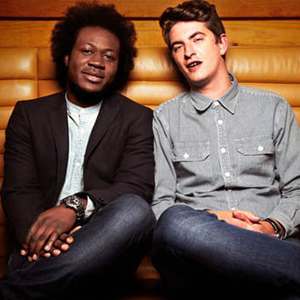
There is a new movement in the garage scene. A new generation of producers, a lot in their teens, who have grown up with cheap computers and software production tools are emerging. The old image of UK garage as the preserve of conspicuous consumption, cocaine, champagne and nice clothes, is being replaced with a darker more overtly dub and dancehall influenced sound. Listen to Dirty Harry’s ‘Dirty Dirty’ on Southwest – the way the bassline growls against the lurching stepper beat – and there are flashbacks to jungle producers like Ed Rush or Dub War’s dread soaked Generation on Tempa which is pure submarine dub.
Dave Jones, better known as Zed Bias, explains what is going on: “Thanks to the ‘bad element’ inside and outside clubs over the last year or so, most of the best UK garage nights have been closed by the police. The ones that do still exist want to book big ‘crews’ to appear at their venues, only to be shut down on the night. It’s not even just in London”.zed
One regular night, Forward, at London’s two hundred capacity Plastic People has become the latest centre for a new sound to develop. “Forward is great because it really does attract the best crowd possible for the music we play. They expect it to be different to what they’ve heard at other parties. I’d say forward is the current Metalheadz, if you know what I mean.” This is an apt call to make, for many of the new 2-step tracks emerging on labels like Ghost, Soulja and Tempa, carry a lot of the aural characteristics of that classic Metalheadz period, 1994 to 1996, when the music was rough, edgy and possibly experimental but still carried propulsive imperatives of a dancefloor.
Steve Goodman, operator of the splendid online resource Hyperdub and a producer under the name of Kode9, agrees, “in London, the only night of note is Forward. The DJs who are involved with the night have refused the musical compromises which most UK garage DJs succumbed to during the scene’s commercialisation. As such, the dub dominates (drawing on elements from dub, electro, drum’n’bass, techno, house and hip hop), and vocals (as much reggae and hip hop oriented as r n b) have been stripped down to transitory glimpses as opposed to songs. The pirate [radio] stations are split between the dark crew based sound, and an old school bumpin 4beat garage sound. London is currently in a phase of transition, you can sense that something new is bubbling around in the system, not yet fully actualised.”
As Goodman explains, the Forward night, Hyperdub and its sister site, Dubplate.Net and many of the new emerging labels are linked by Ammunition Promotions. “Dubplate.Net was set up by Ammunition Promotions in 2001 about six months after Hyperdub.com in 2000. Dubplate and Hyperdub, from unrelated emergences, have converged in a kind of scissors manoeuvre. Ammunition run Forward and manage loads of labels including Tempa, Shelflife, Bingo, Road and Vehicle. I run the site for them.”
“With the collapse of many of the clubs, it is the main source for DJs and producers to hear tunes, not just from abroad, but also within the UK itself. The Dubplate.Net forum has grown in a way we never really foresaw. In a way, it mirrors many of the problems which have bugged the garage scene, yet at the same time the site intensifies dubplate culture in its traditional sense. But I think it has more interesting potential to mutate dubplate culture in some way”
“Hyperdub was developed by me and a little crew of designers, writers and DJs in Brixton alongside a series of low key club nights. Hyperdub’s autonomous Softwar Agents are distributed globally, and contribute as and when they wish. I’m the editor, but not in the usual sense of a magazine. I don’t set deadlines or chase writers – they kind of drift our way. The current manifestation of Hyperdub is only phase one and nobody is really sure of its tendencies. All signals suggest that phase two will look like a record label launched in 2003, but such phase transitions may be volatile, and may result in some casualties.”
Informed by his earlier work with the CCRU (the mid 90s Cybernetic Culture Research Unit which also involved Kodwo Eshun and Sadie Plant) Hyperdub is much more than a website. It is a term that encompasses the transitions between early 90s ‘ardkore to jungle to drum n bass and now to garage, and draws on Paul Gilroy’s notion of the Black Atlantic. Reduced to its simplest terms, Gilroy’s Black Atlantic conceptualises a transnational culture built from the traffic of people and ideas between Africa, Jamaica, America and the UK. For Gilroy it is flows of people (slavery), goods (trade/commerce), and ideas (sounds, music, art) that demonstrate that Black cultures on either side of the Atlantic are transnational rather than nationalistic in nature.
Goodman brings digitisation and the communicative opportunities of the internet to update this, explaining, “Hyperdub is the cultural mutation that emerges where the analogue and digital oceans of sound collide. Black Atlantian rhythmic futurism is the most sustained and rigorous exploration of these cyborgian mutations. For better or for worse, diasporas tend to be the most dynamic, sustainable modes of cultural composition in contemporary capitalism”. Think here the aquatic world of Drexciya, or the influence of Detroit and Jamaica on Berlin producers like Maurizio and his Basic Channel imprint.
The CCRU is still alive, however lies dormant, “CCRU is the mothership, just cruisin’ along in the background, unmanned, yet operating through its agents, connecting a diverse range of hypercultural production, currently spread out between London, Shanghai and Toronto. There will be at least three books published by agents of the CCRU within the next two or three years and I’m currently writing on a book on sonic warfare.”
Back to 2-step and there are new pan-Atlantic mutations taking place – Horsepower Productions do the remix of Jamaican dancehall kingpin Elephant Man, innumerable American r n b acapellas are plundered for sample sources, just as Timbaland and the Neptunes both feed into and plunder the rhythmic complexities of 2-step for their own tracks. Whilst the mass music media ignore the new developments and focus on the easier electroclash (stars, songs, Europeans) and bastardpop (stars, songs, a bit of controversy), Goodman explains that other things are going on. “For sure copyright systems are currently under crisis, stretched both locally and globally. But I think the opposition between creativity and capital is misleading. Capitalism needs creativity [not just in a blood sucking kind of way] more than many people assume. The problem is as much the model of the individual ‘artist’, their ‘creativity’, and expectation of payment, as it is multinational media corporations. They are actually complicit models. The only way around this knot is through collectively developing pragmatic modes of organisation, adaptable tactics and strategies from the bottom up, which ensure that creativity is not stifled and necessary capital feeds back into the system to sustain it. There are lots of examples of labels/collectives who attempt to engage with the market in a way which sees past that binary opposition, either by swarming, for example Wu Tang or the So Solid Crew, or with trans-genre digital strategies such as Mille Plateaux [and their Force Inc and Ritornell offshoots]”.
Zed Bias is using similar swarming tactics. With well over a hundred remixes under his belt and several different collaborative projects, it is about keeping options open and benefiting creatively from the input of other people. “Maddslinky isn’t so much a sound as a collective of very cool people I’ve worked with over the years, and I pulled everyone together for this project. DJ Rocca, Will White from Propellorheads, Juiceman and Simba, Kaidi Tatham, Kevin Robinson (ex-Incognito horns man) – lots of talented people have helped me to do this debut album.”
“Phuturistix is more a studio-based affair, with an album coming out next year on [the softer drum & bass label] Hospital Records. The sound is nicely soulful, but concentrating a bit more on songs, a similar concept to Maddslinky but a very different texture overall. DaLuq is difficult to explain. It’s a project set up primarily to make music we can push at the Forward nights. We have our first release on Soulja right now, and we’ve just remixed the classic [Kraut track and Detroit favourite] ‘E2E4’ by Manuel Gottsching. Henchmen totally focuses on MCs Juiceman and Simba, who appear throughout my catalogue, featuring on loads of tracks. This is their artist album, and we’ve gone downtempo through most of it so expect hip hop vibes! There are no plans for a Zed Bias single for a while, except for ‘Jigga Up (Ring The Alarm)’ a version of the old dancehall classic which is out on my label Sidestepper.”
Zed Bias is the bridge between the breaks and 2step communities. In Australia, breaks is extremely popular with Sydney promoters Fuzzy capturing bigger audiences than many UK breaks events. In Australia too, new microgenres are emerging with specific local relevance – ‘crankstep’ developed by car enthusiasts in western Sydney and ‘boystep’ to describe the progressive pretty breaks of Melbourne’s NuBreed.
Unlike the narrow media boundaries imposed from South London on the spread of drum n bass jungle in the 90s, Bias recognises a much more global opportunity. “I’d like to think that I’m helping that whole thing out right now. I’ve joined up with lots of overseas producers over the last few years – Gush Collective from Germany, Dinesh from NYC, DJ Abstract from San Francisco, DJ Rocca from Italy, and the Katana Cru from Tokyo) and there’s a little network of DJ/producers who support each others shit”. Goodman elaborates, “the emphasis on London has been because of its population density, the concentration of music media capital in the city, and most importantly its ‘scenius’ or collective intelligence, its continuing ability to incubate new sounds – something that happens everywhere – and develop them into collective movements – something that doesn’t happen everywhere. In the 2step scene, undoubtedly the best productions are still coming out of the UK, not just London, but Manchester, Sheffield and Milton Keynes as well, and there is some interesting stuff coming out of the US on a dubstep tip.”
“As Kode9, I’ve DJed in North America, the Middle East and Germany and am playing in Norway next month. There are micro-scenes scattered all over the place, and at Hyperdub, we have contact with operatives in New Zealand, Australia, Tokyo and South America. As far as I am aware, if we are talking about similar tempos, breaks has a much bigger global presence than dubstep just now, but it seems like these scenes are fusing to a certain extent.”
But Goodman is not enthused about breaks, “the breaks scene was pretty manufactured in this country. For me, generally, the nu-breaks sound has always lacked something, like techstep without the speed, to drive it along. Or I found the breaks used so totally unimaginative that I never really went anywhere near it. UK garage has brought with it infinitely more rhythmic innovation than the nu breaks scene. The nu breaks/2step convergence is generally a positive thing. With what has been termed breakstep, the sounds have started trading, in that the breaks get the much needed swing from garage, and garage drifts closer to darker electro/drum n bass soundscapes.”
“Zed Bias is the producer who has practically defined this exchange, for example ‘Supafine’ on Soulja 4, alongside other producers promoted by Ammunition like Darqwan. Check Darqwan’s ‘Confused’ and ‘Nocturnal’ on the Texture imprint. But to be honest, when it comes to that mid-tempo, 135bpm zone, I’ve been more excited by the rhythms influenced by dancehall on Horsepower and Ghost, the ‘boom-boom-clack’, rather than the breakbeat in its traditional form as rinsed in nu-breaks. With Timbaland, breakbeat science had already moved on into glitchy, stuttery territory, leaving the breakbeat of old feeling a little jaded”
“It is unfortunate how the term ‘breaks’ has been reterritorialised onto only a certain breakbeat sound, generally known as nu-breaks”and in terms of electroclash, I love much of that dead-pan robot shit, especially Miss Kitten. But its not really robot enough. I’ve read interviews with her where she admits that she is really a human. Now that’s pretty dull, isn’t it! If you are going to walk the walk, you’ve really got to talk the talk as well, you know. Anyway, I’d rather dance to a ticking watch than electroclash. I’m kind of dismayed by the general cultural drift away from the intensified body culture of rave back towards a dreary rock/pop aesthetic. The electroclash sound is really quite fun, but when it re-connects to the reassertion of pre-rave/rock/pop music, it produces some of the most rhythmically retarded dancefloors you’ll ever see.”
Strange confusions of styles and new technologies – as a result of computer power allowing real-time digital signal processing – are making for exciting opportunities. At the same time, the promise of a distribution revolution through MP3 has been slowed but not thwarted. Steve agrees, “The ‘developed world’ is a pretty leaky enterprise…it has holes in its core (where our sonic obsessions breed) and around its peripheral channels, its escape routes. The internet has already begun to blur the limited channels of cultural drift and vibe migration, multiplying the channels of sonic proliferation. Whether this will undermine the closed circuits of dubplate culture, or merely accelerate and intensify it remains to be seen. We still need to assess the impact of the convergence of technologies like Final Scratch and Traktor with the mp3 revolution. With such technologies are we seeing the emergence of ‘hyperdub plate culture’? We need to take the analog and digital together, and this relationship is still in flux”I think we’re now moving into an era in which cyberpunk dystopia has seeped so pervasively into the everyday that a new wave of intensification is required, in line with contemporary reality warps. Before we were humans or machines, we were kolonies of bacteria. Time for some ribofunk”.
Original Source: Cyclic Defrost – Issue #002




Be the first to comment